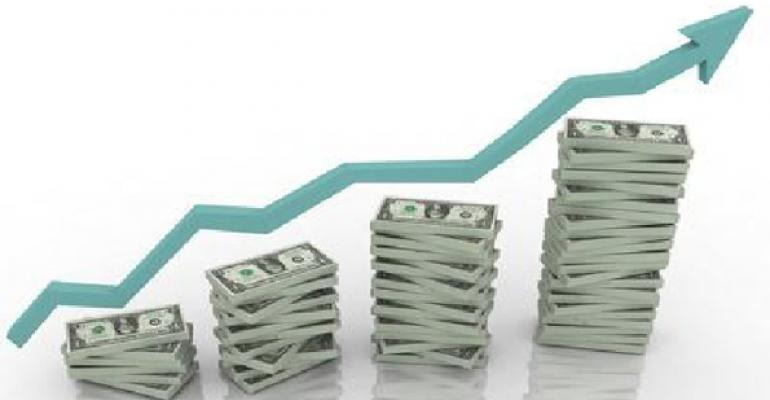Commercial property prices are approaching the levels seen during the last boom, according to leading price indices.
“Average sale prices for core multifamily and office properties in major markets have soared well above their 2006–07 average,” reads a June report from CoStar Realty Information Inc. “Investors continued to aggressively pursue those types of properties.”
As prices rise, investors seem torn between pouring more money into the most expensive assets and investing in properties that may have more potential for future appreciation. Meanwhile, the overall liquidity of the market continues to improve as the bid/ask gap shrinks and properties spend less time on the market.
June statistics from the Moody’s Real Capital Analytics Commercial Property Price Indices show continued steady growth in prices, bringing the index just 4.8 percent below its November 2007 peak.
Digging into the numbers, six of the 23 Moody’s/RCA’s indices are now higher than their peaks before the crisis, including apartment buildings in major markets; apartment and office properties in central business districts (CBDs) in major markets; office buildings in CBDs in non-major markets; major markets aggregate and retail in major markets.
Suburban office buildings in non-major markets have experienced the slowest recovery, regaining just over 30 percent of their peak-to-trough loss.
Future returns
Recently, non-major markets and less-favored property types have been gaining on the CPPI.
Appreciation for most asset types rose ahead of apartment properties, the long-time favorite, in the CPPI numbers for both April and the last 12 months.
The largest and most expensive properties have led the recovery in real estate prices and have an outsized importance in CoStar Group’s U.S. Composite Index, which in April had recovered to within 2.2 percent of its prior peak, according to CoStar’s June report. The prices for the priciest properties kept marching higher in April. The composite index advanced 2 percent in April 2014, according to CoStar.
Less expensive properties, however, show more potential to grow because they are still far below their old peak prices. CoStar’s equal-weighted U.S. Composite Index is 21.9 percent below its prior peak. An equal weighted index gives the same weight, or importance, to each asset in the index. So the smallest properties are given equal weight to the largest properties.
Throughout the first quarter of 2014, apartment properties showed a relatively weak total return of just 2.21 percent, according to the National Council of Real Estate Investment Fiduciaries (NCREIF). That’s the lowest total return for apartments since the first quarter of 2010. Part of the reason behind the weak returns is that appreciation is slowing for apartment properties. The 0.99 percent appreciation showed by NCREIF is also the slowest since the first quarter.
As investors become more optimistic about the broader economy, they are putting more money into other property types. Retail continued to lead the NCREIF index in the first quarter of 2014, with total returns of 4.3 percent. Investors are betting that a rising economy with help lift retail properties, which still suffer from relatively high vacancies in many markets.
“Despite the strong return performance, the fundamentals were poor,” according to NCREIF.
No haggling over price
The average difference between the prices sellers ask for their properties and the final sales price shrank by more than 1 percent over the 12-month period that ended in April. The sales price to asking price ratio was 88 percent that month, according to CoStar. The change shows improved liquidity in the investment sales market.
“Multifamily properties are driving much of this improvement,” say CoStar researchers. That’s especially true in core markets. For apartment properties in Los Angeles, San Francisco, Boston and New York, the average difference between asking prices and sales prices has shrunk to 2006-07 levels, according to CoStar.
In another measure of improving liquidity, the average time a for-sale property spends on the market shrank 3 percent to 417 days over the 12 months ending in April, and the share of properties pulled off the market by discouraged sellers also dropped by more than 2 percent, CoStar reports.

